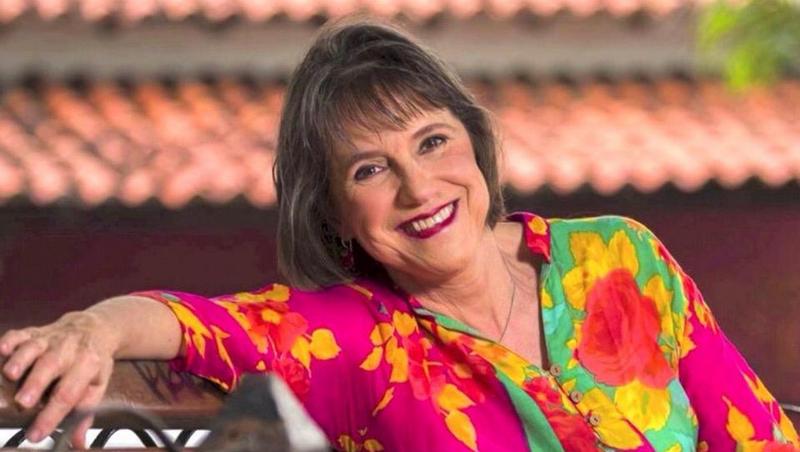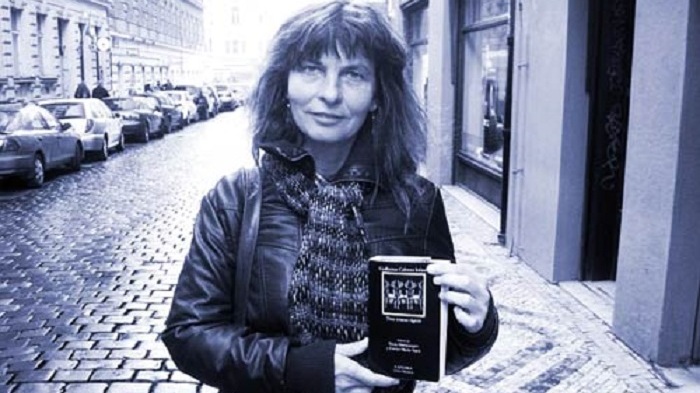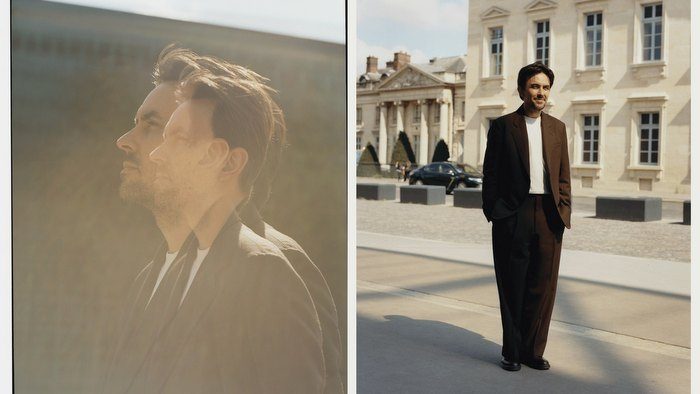By: Susana Méndez
Paddy MacDonald is the world most important private collector of objects related to Charles Chaplin (1889-1977). In his third visit to Cuba, he brought 493 pieces from his memorabilia to be exhibited as a very important part of the Festival Chaplin en La Habana (Chaplin Festival in Havana) that was recently celebrated in the Cuban capital from July 1 to 12.
MacDonald is an Irish origin passionate Australian who began our meeting placing the figure of Chaplin between us “to inspire us”, he affirmed humorously, but certain.
As a present, he brought me twelve quotes he wrote about Chaplin, a postcard of Limelight and a photo of the grave where Chaplin lies buried together his fourth and last wife, Oona O’ Neill, in the cemetery of Vevey, Switzerland.
He promised me to return to Chaplin’s grave to place a red rose on my behalf.
“People leave stones, coins and business cards in his grave, but I left my heart”, he told me.
He also gave me this written phrase: “Cuba is news at this time of history; you have the moon and the stars, your music, your dance and the warmest people”.
That way, with Chaplin with us, started the conversation of Paddy MacDonald with Cubarte.
Do you keep in “your collection” your first memory of Charles Chaplin?
Yes. I think my first memory of Chaplin is from 1960, when I saw The Gold Rush. I will never forget that he ate a boot, which was made with candy, and after that he was sick for a week.
When did Chaplin move you so much to the point that you began to gather objects related to his personality?
Thirty years ago I took the decision to begin gathering objects related to Chaplin; the piece that started the collection is a little statue I bought in Switzerland. My brother was an English professor there and he knew the Chaplin family. The first time this family went to Corsier-sur-Vevey, in Switzerland, they stayed at Hotel de Famille, property of my brother’s wife.
Whenever I visited my brother, we talked about Chaplin and I was increasingly inspired. That was how I began to create the image I have about him.
But what specific element made you take this decision?
The fact that although Charles Chaplin was a man with no education, a poor child, he achieved a great wisdom; he even spoke several languages without having studied ever. Chaplin used to talk not to the privileged people but to the less favored ones; this was enough to inspire me, he showed me the opportunities and I took them.
All my siblings were professionals, while I was just an average person, but I had the dream to work in the radio and the television. Chaplin told me “do it, don’t talk so much, but do it”, and I did so. When I was 23, I went to Minnesota, United States, to study everything about radio and television transmissions and later I started to work in a morning radio program as an announcer.
Everything I have done was inspired by Chaplin. He motivated me to reach my dream, what I wanted to do.
Did the decision to gather those Chaplin-related objects aims at making you feel closer to him physically? It means, maybe, to receive something of his energy?
Yes, it is so.
I think of Chaplin every day; I’m talking to you and I’m seeing his image, listening to his music; Chaplin has an inexhaustible, incalculable energy.
He was a perfectionist; when he shot City Lights, he filmed 342 times the famous scene when the leading actress, who had already recovered the sight, discovered him, because he wanted to obtain the image he was pursuing. Artists didn’t like this but he was looking for perfection.
It is evident you are not a simple collector of Charles Chaplin memorabilia; you are an admirer of his personality and his spirit, both of which have influenced you. Is his permanent sense of humor among those influences?
Yes, of course, his phrase “A day without laughter is a day wasted” is a maxim for me. It was the first of the twelve phrases I gave you; he wrote it but it’s mine.
He was and he is loved and admired by all the people in the world who want to smile.
Where have you obtained the objects that form your collection?
Everywhere: Germany, India, Spain, France, England, Chile, Cuba, Italy, Argentina, Sweden, Australia, United States, Belgium, Poland, Russia, Uruguay, Mozambique, Granada, Bulgaria, Czechoslovakia, Indonesia, Lithuania…
Have you traveled to all those places just to acquire these pieces? Have you always bought them?
Yes, to find them and to buy them, although some have been donated.
How many elements make up the collection? Which are the most valuable ones according to their price and meaning?
It’s made up by hundreds of elements, many more than what I brought to Cuba, which were 493.
The object I treasure the most, considering its price, is a Times magazine from July 6, 1925, with Chaplin in the cover. This was the first time an actor appeared in the cover of this publication, while a very unusual article is a penknife with the image of the actor.
The greatest meaning piece is the rarest and the smallest one; a miniature I have just received in Cuba; it’s the face of Charlot drawn in a corn grain and locked in the tiny blister of a medicine pills kit. I am very happy with this piece.
How did it get to you?
This is the story in Cuba; I didn’t buy it. A man named Nelson Marcelo Sergrañes Serrates, who lives in Cerro, attended all the activities of the Chaplin Festival in Havana, the press conference, the opening of the exhibits and after that, he came one day and brought me this corn grain with the image of Charlot. It is simple, but it’s pure imagination and creativity; he only needed a pen and a corn grain. How did he manage to put it inside the medicine kit? He is Cuban, the Cuban creativity! That is Cuba!
Did he paint it before or after his participation in the Festival?
I don’t know, but maybe he was inspired.
I think this is one of the best stories of the event and I promised him that whenever I would exhibit his piece in any part of the world, I would tell the story. Charles Chaplin would love it.
Where have you exhibited your collection?
After 30 years collecting the pieces I decided to make a first exhibit in Ireland and the second is this one we have just closed here in Cuba; I hope to make one in China soon.
How would you value the exhibits made in Cuba and the reaction of the people?
Even now, Chaplin keeps inspiring me; his spirit told me “Cuba will do it fine and it was the best”. When I went to his grave, I asked him to give Cuba a great Festival and a great exhibit and it was so.
This is the first time a so much important Chaplin memorabilia exhibit is celebrated in Latin America.
I feel very happy about the presentation of my pieces in Cuba. It was a surprising work. Four exhibits to honor Chaplin were done: at the Fine Arts Museum, at José Martí National Library, at the Chaplin movie theatre lobby and at Fresa y Chocolate Cultural Center’s art gallery.
It was a real tribute to Charles Chaplin. Cuba highly honored his memory and his patrimony and I am very glad for how the curators worked.
But it was also important that the samples were part of the Chaplin Festival in Havana, because they strengthened the tribute: the retrospective, the stamp cancellation and the exhibit of the beautiful 20 posters created by students and designers.
There are statues of Chaplin in Czechoslovakia, Poland, Ireland, England, India, Italy, Spain, Switzerland, but none in Cuba; that would be my wish.
This is what I feel, that’s why I say so. I don’t like to throw words to the wind.
At the end of her life, Oona O’Neill, Chaplin’s widow, said: “Nobody will remember us”, but Cuba did so; Cuba hasn’t forgotten Chaplin. This Festival has been an inspiration, everything was emotional for me; I was very moved for the reaction of the people during the exhibits. Many people of all ages came to greet me, to shake my hand, to hug me and they thanked me for having brought this exhibit from Australia to Cuba while I was crying.
Source: Cubarte
Related Publications

Cecilia Todd. Singing always makes sense
August 21, 2020
Q & A with Marguerite Horberg of Hot House
July 17, 2020












